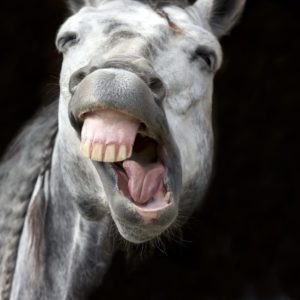Dental checks for your animals includes a complete oral health assessment. This process allows a full oral health checkup, diagnosis and/or treatment for any oral issues with your pet.
Animals are presented to clinics for a dental check up for a variety of reasons- owners may have noticed some discoloration of the teeth, bad breath or inflamed gum lines. Your veterinarian is the best person to diagnose any disease or abnormalities in the oral cavity.
During an oral exam, your treating vet will assess not only the teeth, but also the gums, the tongue, throat and the joints of the jaw.
The teeth are examined for any teeth that may be missing, unstable or broken, observations of discoloration are made, observe for any plaque or tartar and we check for any remaining deciduous teeth. A bite assessment is also performed which includes making note of the jaw length and width, symmetry, relationship of individual teeth, and tipping or rotation of individual teeth.
[ngg src=”galleries” ids=”20″ display=”basic_thumbnail” thumbnail_crop=”0″]The gums (gingiva and oral mucosa) are examined for reddened and inflamed gums, any bleeding from the gums, inflammation of the mucous membranes, tumours or masses, ulcerations and lacerations.
The tongue is checked for any surface abnormalities, lacerations, ulcerations or masses. The back of the throat is examined for any enlargements, ulcerations or foreign material.
The joints of the jaw are examined for any crepitus (grinding or crunching noises during movement) and limitation of opening. The best assessment of the joints is during the opening and closing of the mouth.
To determine if there are any fractures or dislocations of the jaw due to trauma, general anaesthetics are usually required for a complete examination.
To help you check your pet at home, have a look at our questionnaire below:
- Has your pet had any change in appetite recently?
- Are they preferring soft foods rather than dry kibble?
- Is your pet drooling or salivating more?
- Is your pet rubbing their face on things or pawing at their face?
- Are there any teeth missing?
- Is there any facial swelling?
If you have answered yes to any of these questions, it may be time for a check-up.
Your vet may suggest a dental procedure which involves having your pet go under a general anaesthetic, which will also allow a more thorough examination of the mouth. Assessing your pet’s oral cavity while asleep may also include radiography to examine what is happening underneath the gum line.
The dental procedure will include and scale (removal of plaque & tartar by an ultrasonic probe) and polish (to smooth any micro-abrasions on the teeth).
Damaged teeth may require removal, your treating vet will notify you if this needs to be performed.
During the recovery period, your pet may prefer to eat softer foods, cubed meat is our recommendation as soft mince can get stuck in any holes.
After a dental, your vet or nurse will discuss a treatment plan for ongoing oral health care. This may include:
- Adding a dental food into the diet which the mechanical action of chewing will aid in cleaning your pets teeth.
- Oral rinses or water additives to help fight plaque, maintain oral health and freshen breath.
- Brushing your pet’s teeth is also an option. This is not a task suited to everybody and can take some time to getting used to for both human and companion.
- Treats and dental chews, although not the most effective preventative measure, it is a very easy option.
If you are ever concerned about your pet’s oral health, book an appointment with us today J
Dental month at the Gisborne Vet Clinic is offering a free dental check-ups with cats and dogs through the month of August and discounted dental procedures with Dr Jemma Browne



